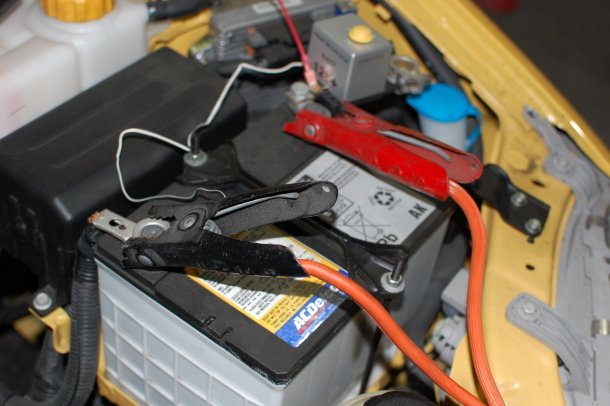I think we're going down the wrong road until we know the exact symptoms. The voltage regulator is inside the Engine Computer and causes very little trouble. To get 78 amps, we would have to know how the testing was done. You're right that 78 amps is too low, but I doubt that is related to this problem. The common alternators for this engine are the 117 amp and the 136 amp. The common defects will result in 0 amps, maximum amps, or exactly one third of the alternator's maximum rating, but only under a full-load test, not just from running the engine with a lot of stuff turned on.
To get 0 amps there would have to be a break in one of the two smaller wires at the back of the alternator or an open brush inside it. Worn brushes can certainly be expected before the mileage listed, but they always start out being intermittent. The clues would be a dropping "Volts" gauge on the dash, and a "Check Gauges" warning light. This would go on for weeks or months before other symptoms were noticed.
The only way to get maximum output would be for the control wire to be grounded. That would boil the water out of the battery and a lot of light bulbs would be popping. In theory a shorted voltage regulator would cause that too, but because of the additional circuitry in the computer, the control line will never get drawn all the way down to 0 volts. 4.0 volts is about as low as it can go, and that is low enough to cause full alternator output. We'd find that by measuring the voltages on the two smaller wires at the back of the alternator, but that has to be done with the engine running. The Check Engine light would be on too, and the fault code would be "Field not switching properly".
To get one third of the maximum output rating is caused by one failed diode of the six inside the alternator. That means you'd only get 45 amps out of a 136 amp alternator, but that would have to be under full load. With normal driving, 45 amps is plenty to meet the needs of the electrical system under most conditions, and to keep the battery charged. If a lot of stuff was turned on, like running the heater fan on the higher settings, head lights and wipers on, along with the required fuel pump and fuel injection and ignition systems, the battery could have to make up the difference, but it would take a while to slowly run it down. The symptom would be slow cranking, possibly not fast enough for the engine to start and run. An additional, less-known symptom is low voltage can mimic disconnecting the battery, and on Chrysler products that means the Engine Computer will lose its memory which includes "minimum throttle". Until that is relearned, which is real easy to do, idle speed will be real low and the engine may crank just fine but it won't start or run unless the accelerator pedal is held down 1/4. That symptom can also be caused by an intermittent battery cable connection.
The clue to a cable connection problem is to observe the brightness of the head lights or interior lights. Until we know those things, we still don't really know what the problem is. Also, when was that 13.1 volts measured? That isn't correct for any condition. A good, fully-charged battery will measure 12.6 volts. Higher than that suggests it was just removed from a battery charger and that is the surface charge that wasn't removed before testing. If the engine was running during that measurement, it's way too low. It has to be between 13.75 and 14.75 volts to keep the battery charged. The most common way for it to be so low is to have a shorted cell, but that would cause slow cranking all the time. We also need to know exactly where that reading was taken because that can help pinpoint the location of a bad connection. Were the meter probes on the battery posts, on the cable clamps, or somewhere else?
There's nothing that can cause an alternator to fail gradually, or slowly get weaker, because that would mean it was losing some of the loops of wire in the stator or field windings. As I mentioned, a failed diode will limit the maximum output to one third of the design rating, but it will deliver the needed amount of current up until that point is reached. To get something less than maximum current under a full-load test, other than that failed diode, the problem would have to be somewhere else. The most likely suspect would be excessive resistance in the fat wire going from the alternator's output terminal back to the battery positive post. With the addition of a bolted-in fuse in that circuit, that adds a good place to look for a loose or corroded connection.
One last thing to consider is due to the mileage, it is fairly likely the alternator has been replaced once already. Chrysler is pretty good about parts interchangeability between years, models, and engines, so it is common to find one installed from a different application. The only thing we can know for sure is 78 amps means the system is working correctly when it was tested, and that is enough current to prevent starting problems.
Tuesday, December 2nd, 2014 AT 6:06 PM




